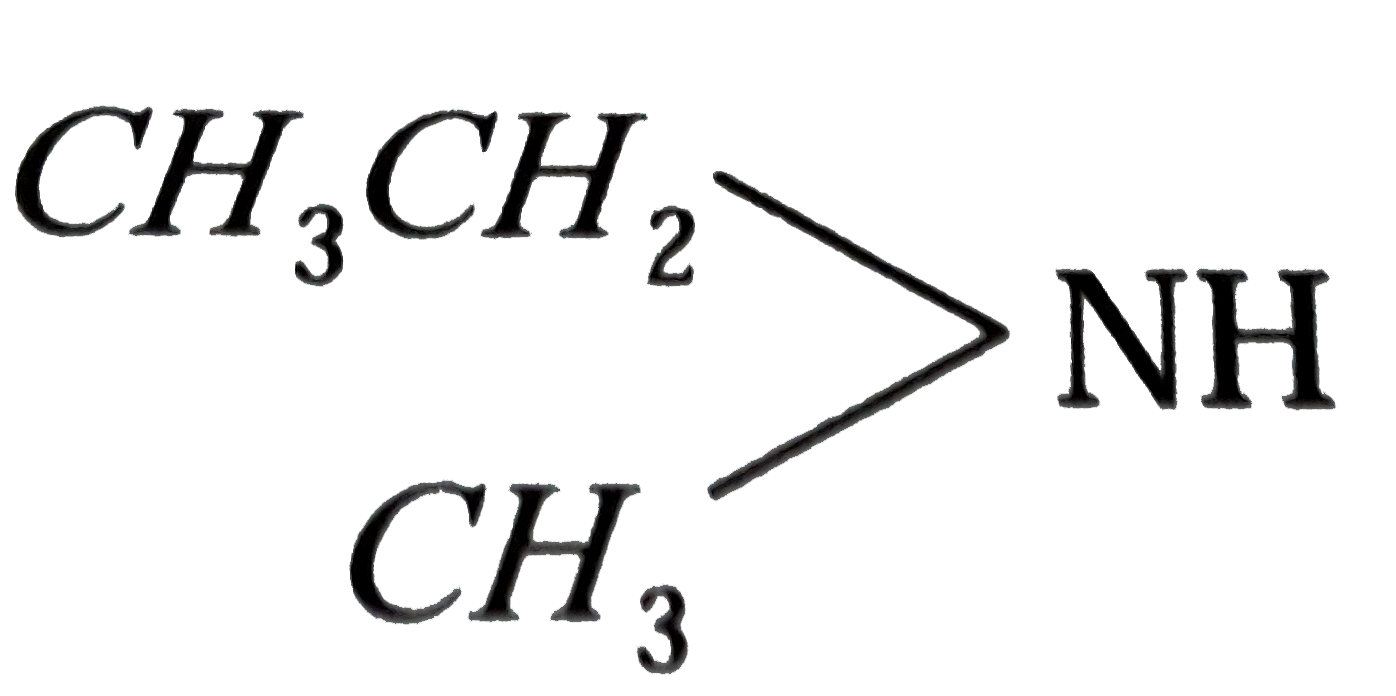Which reagent will you use for the following reaction?
CH3CH2CH2CH3→CH3CH2CH2CH2Cl+CH3CH2CHClCH3
Cl_2/UV light
NaCl+H2SO4
Cl2 gas in dark
Cl2 gas in the presence of iron in dark
The correct Answer is:A
To determine the reagent needed for the reaction of butane to produce two different chlorinated products, we can follow these steps:
1. Identify the Reactant:
The reactant is butane, which has the molecular formula C4H10 and can be represented as CH3CH2CH2CH3.
2. Understand the Reaction Type:
The reaction involves the halogenation of butane, specifically chlorination, where hydrogen atoms in butane are replaced by chlorine atoms.
3. Determine the Reagents:
The typical reagent for halogenation is chlorine gas (Cl2). However, for the reaction to proceed, we need a condition that allows for the substitution of hydrogen atoms with chlorine.
4. Identify the Reaction Conditions:
The reaction requires a free radical initiator or UV light (hν) to initiate the reaction. This is because the chlorination of alkanes proceeds via a free radical mechanism.
5. Mechanism of the Reaction:
- Initiation: The Cl2 molecule is dissociated into two chlorine free radicals (Cl⋅) under UV light.
- Propagation: The chlorine free radicals then abstract hydrogen atoms from butane, forming chlorinated products and new chlorine radicals that continue the chain reaction.
- The products formed will be CH3CH2CH2CH2Cl (1-chlorobutane) and CH3CH2CHClCH3 (2-chlorobutane).
6. Final Answer:
The reagent used for this reaction is Cl2 in the presence of UV light (hν).
The reactant is butane, which has the molecular formula C4H10 and can be represented as CH3CH2CH2CH3.
The reaction involves the halogenation of butane, specifically chlorination, where hydrogen atoms in butane are replaced by chlorine atoms.
The typical reagent for halogenation is chlorine gas (Cl2). However, for the reaction to proceed, we need a condition that allows for the substitution of hydrogen atoms with chlorine.
The reaction requires a free radical initiator or UV light (hν) to initiate the reaction. This is because the chlorination of alkanes proceeds via a free radical mechanism.
- Initiation: The Cl2 molecule is dissociated into two chlorine free radicals (Cl⋅) under UV light.
- Propagation: The chlorine free radicals then abstract hydrogen atoms from butane, forming chlorinated products and new chlorine radicals that continue the chain reaction.
- The products formed will be CH3CH2CH2CH2Cl (1-chlorobutane) and CH3CH2CHClCH3 (2-chlorobutane).
The reagent used for this reaction is Cl2 in the presence of UV light (hν).
Topper's Solved these Questions
- SAMPLE PAPER 07BOOK - EDUCART PUBLICATIONCHAPTER - SAMPLE PAPER 07EXERCISE - SECTION-C
6 Videos
- SAMPLE PAPER 07BOOK - EDUCART PUBLICATIONCHAPTER - SAMPLE PAPER 07EXERCISE - SECTION-C
6 Videos
- SAMPLE PAPER 06BOOK - EDUCART PUBLICATIONCHAPTER - SAMPLE PAPER 06EXERCISE - SECTION-C
6 Videos
- SAMPLE PAPER 10BOOK - EDUCART PUBLICATIONCHAPTER - SAMPLE PAPER 10EXERCISE - SECTION - C
5 Videos
Similar Questions
Knowledge Check
Which reagent will you use for the following reaction ?
CH3CH2CH2CH3→CH3CH2CH2CH2Cl+CH3CH2CHClCH3ACl2/UV lightBNaCl+H2SO4CCl2 gas in darkDCl2 gas in the presence of iron in darkWhich reagent will you use for the following reaction ?
CH3CH2CH2CH3→CH3CH2CH2CH2Cl+CH3CH2CHClCH3ACl2/UV lightBNaCl+H2SO4CCl2 gas in darkDCl2 gas in the presence of iron in darkWhich reagent will you use for the following reaction.
CH3CH2CH2CH3→CH3CH2CH2CH2Cl+CH3CH2CHClCH3ACl2/UV lightBNaCl+H2SO4CCl2 gas in darkDCl2 ga in the presence of iron in dark
IUPAC name is
CH3−CH2−CH2−CH(C(CH3)3)−CH2−CH2−CH3
View SolutionIUPAC name is
CH3−CH(CH2−CH3)−CH2−CH2−CH2−CH3
View SolutionWhich reagent would you use for the following reaction ?
CH3CH2CH2CH3→CH3CH2CH2Cl+CH3CH2CHClCH3
View SolutionWhich of the following should be most volatile?
I) CH3CH2CH2NH2II)(CH3)3NIII)

IV) CH3CH2CH3
View SolutionThe reagent used for the conversion of CH3CH2COOH→CH3CH2CH3 is
View Solution
